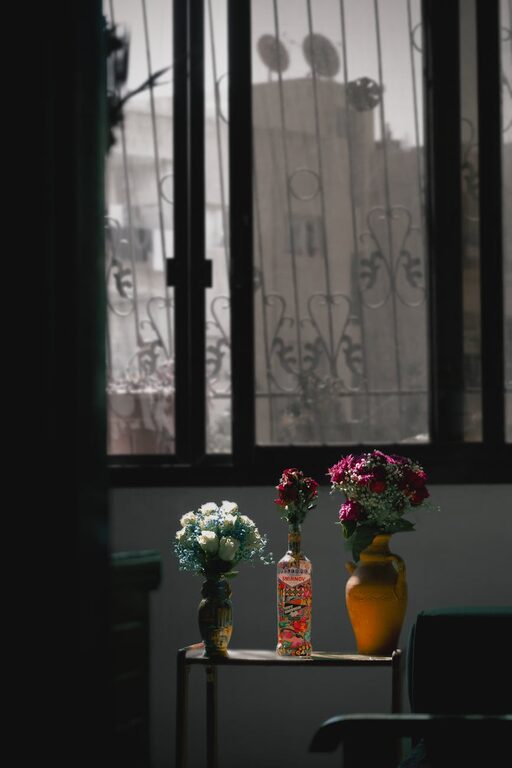Creating a peaceful and relaxing atmosphere at home starts with the colors you choose for your walls, furniture, and decorations. Calm colors can significantly influence your mood, helping you unwind after a busy day. But with so many shades and tones available, selecting the right ones can feel overwhelming.
In this guide, we’ll explore practical tips for choosing calm colors that suit your home and personal style, making your space a true sanctuary.
Why Choose Calm Colors for Your Home?
Colors have a strong psychological impact. Calm colors, often soft and muted, promote relaxation, reduce stress, and create a feeling of balance. Unlike bold or vibrant hues that energize or stimulate, calm colors invite tranquility and restfulness.
Some benefits of using calm colors include:
– Enhancing focus and concentration
– Making spaces appear larger and more open
– Creating a timeless, elegant look
– Providing a perfect backdrop for personal touches
Popular Calm Color Choices
Before diving into tips, it helps to know which colors are typically considered calming:
– Soft blues: Evoke the sky and sea, soothing and peaceful
– Light greens: Reflect nature, promoting freshness and balance
– Neutrals: Beige, taupe, greige, and soft grays offer subtle warmth and versatility
– Pale lavender or lilac: Gentle and comforting, with a touch of sophistication
– Soft blush or peach: Adds warmth without overpowering
Tips for Choosing Calm Colors
1. Consider the Room’s Purpose
Different rooms serve different functions, so the color choice should support these activities:
– Bedrooms: Soft blues, muted greens, or lavender encourage restful sleep
– Living rooms: Neutral tones with warm accents create an inviting space for relaxation
– Home offices: Light greens or soft grays help maintain focus without feeling sterile
– Bathrooms: Pale blues or seafoam greens enhance a spa-like atmosphere
2. Use the Color Wheel for Balance
Understanding color relationships can help you create harmony:
– Choose analogous colors (colors next to each other on the wheel) like blue and green for subtle variation
– Use monochromatic schemes with different shades of the same hue for simplicity
– Add neutral colors to balance gentle pastels and prevent the space from feeling too cold or bland
3. Test Colors in Natural and Artificial Light
Colors can look very different depending on lighting. Always test paint samples at different times of the day:
– Place swatches on walls and observe morning, afternoon, and evening light
– Notice the impact of artificial lights you use, such as warm or cool bulbs
– Remember that glossy finishes reflect more light and can intensify colors, while matte finishes soften them
4. Combine Calm Colors with Texture
Combine colors with textures to add interest without overwhelming the space:
– Soft cushions, throws, and rugs in neutral or pastel tones enhance calmness
– Natural materials like wood, linen, and cotton complement calming colors naturally
– Avoid overly shiny or busy patterns that may clash with the soothing palette
5. Use Accent Colors Wisely
To avoid monotony, consider subtle accent colors that maintain the calm vibe:
– Muted metallics like brushed gold or silver add warmth and shine
– Earth tones (soft terracotta, warm beige) introduce depth
– Soft blues paired with cream or light gray accents feel balanced
6. Don’t Forget Ceilings and Trim
Calm colors aren’t limited to walls. Painting ceilings a soft white or pale blue can enhance the sense of space and calm. Similarly, choosing a coordinating but slightly lighter or darker tone for trim adds subtle definition without harsh contrasts.
7. Trust Your Instincts and Personal Preferences
While there are general guidelines, your home should reflect your personality and taste. If you love a certain shade, find a way to incorporate it in small doses, such as through art, cushions, or decorative items, alongside your main calm palette.
Common Mistakes to Avoid
– Choosing colors based solely on trends: Trends come and go, but calm colors you enjoy will last longer
– Ignoring lighting conditions: A calm shade in a dark room can end up looking dull or depressing
– Overusing very pale colors: Too much white or beige without variation can feel sterile
– Neglecting sample testing: Paint looks different on a wall than on a small sample card
Final Thoughts
Selecting calm colors for your home is one of the easiest ways to create a relaxing and inviting space. Remember to consider the function of each room, lighting, textures, and your personal style. With thoughtful choices, your home can become a peaceful retreat filled with colors that soothe and refresh.
Happy decorating!



